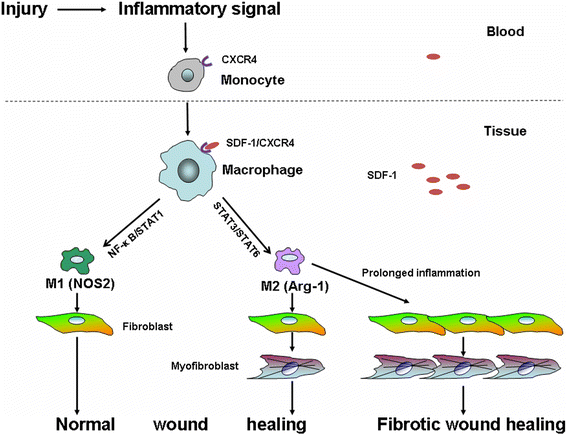The molecular basis of hypertrophic scars
- PMID: 27574672
- PMCID: PMC4963951
- DOI: 10.1186/s41038-015-0026-4
The molecular basis of hypertrophic scars
Abstract
Hypertrophic scars (HTS) are caused by dermal injuries such as trauma and burns to the deep dermis, which are red, raised, itchy and painful. They can cause cosmetic disfigurement or contractures if craniofacial areas or mobile region of the skin are affected. Abnormal wound healing with more extracellular matrix deposition than degradation will result in HTS formation. This review will introduce the physiology of wound healing, dermal HTS formation, treatment and difference with keloids in the skin, and it also review the current advance of molecular basis of HTS including the involvement of cytokines, growth factors, and macrophages via chemokine pathway, to bring insights for future prevention and treatment of HTS.
Keywords: Animal model; Cytokines; Growth factors; Hypertrophic scars; Macrophages; Stromal cell-derived factor 1/CXCR4 signaling.
Figures


References
-
- Werner S, Grose R. Regulation of wound healing by growth factors and cytokines. Physiol Rev. 2003;83:835–70. - PubMed
Publication types
LinkOut - more resources
Full Text Sources
Other Literature Sources

